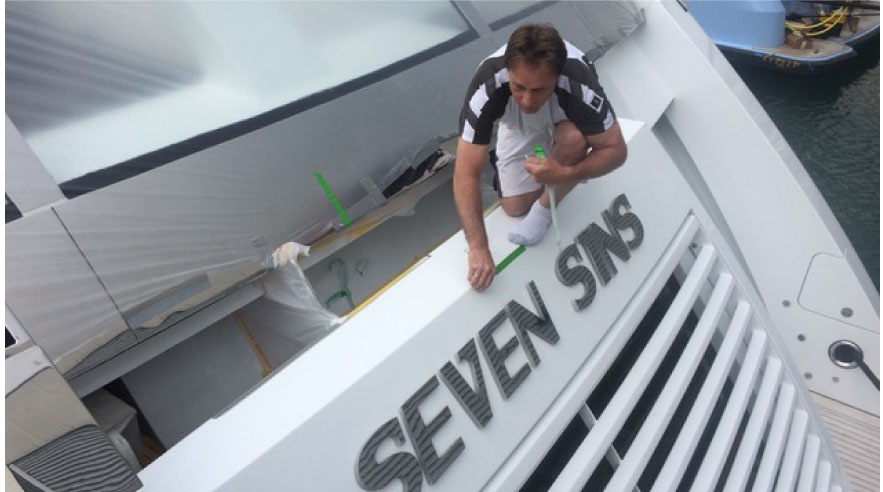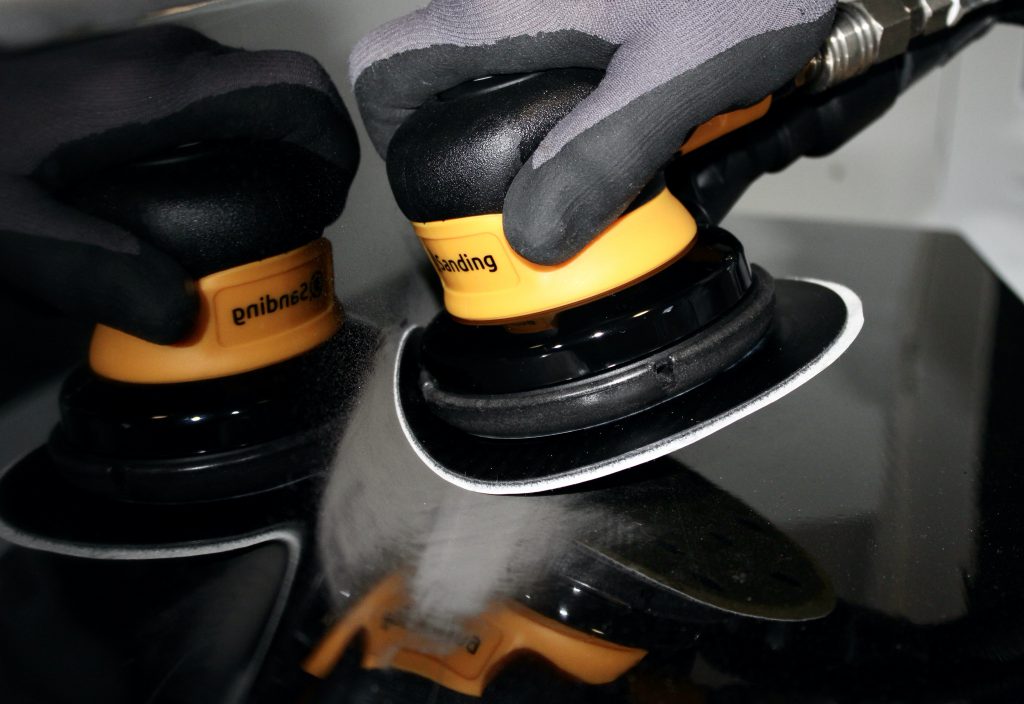How it all started
The story of Quintin J. Broussard
In 1989, I started with yacht painting on the Miami river in Florida. Having a passion for yacht painting, hard working with speed, efficiency with quality in mind and you will do good work.


An opportunity came for me to join a yacht as crew for a Mediterranean season of charters.
At the end of the summer I left that yacht and I did a refit on another yacht at a yard in north Holland. After that I went back to the USA working at a yacht yard on Savannah river Ga.
A college told me:
“I wish someone will invent a tool to machine sand hand sanding work, because I hate doing this work.”
I said that’s why they call it hand sanding, and we laughed. And then I remember my father said to me, if you can think it there is always a way to make it happen, and if you think about it long and hard you will find a way. So, I always keep that in mind.
Then I worked at a yacht yard in Tampa Florida. I still kept doing my work the same way, with passion, speed, being efficient and with quality in mind. Another door opened for me and I moved to Holland. Working on another paint team, all Dutch, to do more hand sanding with a hand sanding soft pad. I started using two hands and turn it while you are sanding you can be more efficient and use less sand paper.
Then it hit me; I came up with the concept how you can machine sand hand sand work. Went straight to my tool box and got a cut down sanding pad that I have been using for the last ten years for sanding in tight places. So, with the cut down pad one sheet of sand paper duct tape and cardboard I made my first prototype, and it worked great.
I did the hand sanding on my side of the yacht in record time. Then I went to my Dutch college on the other side of the yacht and told him I was done. He said that that is not possible, there is no way you could be done that quick so we went and look at it. He saw it was done and said to me how is that possible he said again how did you do that so fast.
I said that is my secret, or you work to slow. By the end of the day he was still not done with his side of the yacht. As a yacht painter I knew I was on to something big then I never used it at work again. Then I started working out of my garage building prototype after prototype, for the next ten years trying to figure it all out. I finally got it, how to use it and what to use it on.
What you know about sanding with a machine by keeping it flat, forget it we are going to break all the rules for machine sanding.
Retrain yourself in breaking the rules of machine sanding, how to use it and what to use it on. The hard work of most hand sanding just got easier, with Speed, Efficiency and Quality.
Learn this way of sanding with the Q-Backing pad and you will find a lot of things you can use it for to make your work faster, easier and more fun!
With a Q-Backing pad you can sand radius in primer and top coat on metal, wood and gelcoat. Creates a sanding block effect when the flexible edge is bent upwards and sands small imperfections out. You can also use it with a scuff disc.
You can also sand portholes and large in side roundings with a Q Softpad with such speed you would have a hard time believing what you just saw be done with a machine. With an orbital sanded surface is always better then by hand. It’s easier to cover in end layers of paint.
You can sand next to a tape line like never before. With just mm to scuff afterward.
Put it in the right hands you can do work that you never dreamed that was possible with a machine. Sanding with the Q-Backing pad gives your ability to do your work with speed, efficiency and quality.
You can honestly say: it’s all about the trick.
Read more about the Q Sanding System, Products